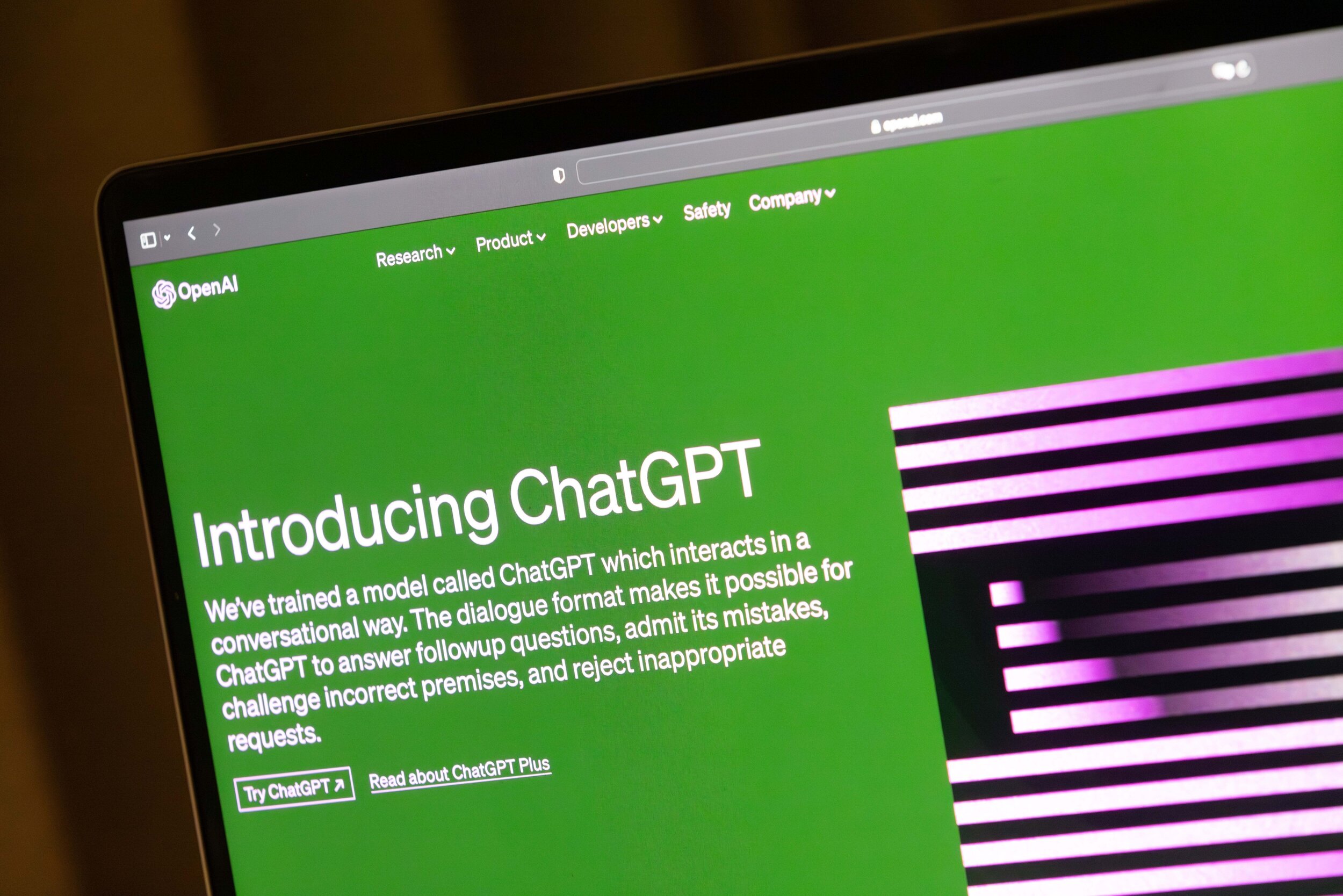- AIdeations
- Posts
- Google's New AI Models, Flybridge's AI Index, and the Future of Energy-Efficient AI
Google's New AI Models, Flybridge's AI Index, and the Future of Energy-Efficient AI
Discover how AI is reshaping businesses, from Google's latest models to groundbreaking energy solutions and investment opportunities.


Aideations: Your Quick Guide to Today's Top Stories, Tools, Tutorials, Research, and More! Here's what you need to know today in the world of AI and tech. We've got insights on Google's new AI models, Flybridge's AI Index, a major breakthrough in AI power efficiency, and more. Let's dive in!
🧠 Top Stories & Opinions
Google Unveils Gemini 1.5 Flash and Pro to the Public
Flybridge's AI Index: A Game Changer in AI Investments
Researchers Solve AI's Biggest Energy Conundrum
Rabbit Data Breach Exposes Sensitive Information
🔍 News from the Front Lines
Mind-blowing AI instantly makes artificial web pages from anything you type
The Two Most Important Ways AI Will Impact Next-Gen Vehicles
Can AI cure the corruption and biases that plague boxing?
There's a raucous debate in Silicon Valley over the use of AI chatbots in tech job interviews
📚 Tutorial of the Day
Google Prompt Engineering Class
🎥 Video of the Day
Here's Where AI Is Headed (Feat. Dmitry Shapiro)
⚙️ 6 New AI Tools
Norm AI Agents, Created By Humans, Pygma, Ario, Sensi, Otto Grid.
📚 Research of the Day
New framework for optimizing and evolving language agents autonomously, reducing manual engineering efforts.
💡 Prompt of the Day
Generate unique niche ideas by combining your skills, interests, and potential market opportunities.
🐦 Tweet of the Day
Stay informed and ahead of the curve with Aideations. See you tomorrow for more insights and innovations! 🚀
Google Unveils Gemini 1.5 Flash and Pro to the Public

Quick Byte:
Google Cloud has made its two advanced AI models—Gemini 1.5 Flash and Pro—publicly accessible, offering new capabilities to developers. The models were previously introduced at Google I/O and aim to enhance AI-powered solutions for businesses.
Key Takeaways:
Gemini 1.5 Flash and Pro: Gemini 1.5 Flash, a small multimodal model with a 1 million token context window, is designed for high-frequency tasks. Gemini 1.5 Pro, with a 2 million token context window, is Google's most powerful LLM to date.
Business Adoption: Google Cloud CEO Thomas Kurian highlighted significant momentum in AI adoption, with companies like Accenture, Airbus, and Goldman Sachs leveraging Google’s AI models and Vertex platform.
Enhanced Developer Features: New capabilities include context caching and provisioned throughput, which enhance the efficiency and scalability of AI applications.
Practical Tips for Business Owners:
Leverage New Models: Utilize Gemini 1.5 Flash for tasks requiring lower latency and affordability, and Gemini 1.5 Pro for processing extensive data without segmentation.
Optimize Costs: Take advantage of context caching to reduce input costs by up to 75% and improve the efficiency of long conversations or document processing.
Scale with Provisioned Throughput: Ensure predictability and reliability in production workloads by using provisioned throughput, especially during high-demand events.
Bigger Picture:
Google's release of Gemini 1.5 Flash and Pro underscores the company's commitment to advancing AI capabilities and supporting business innovation. By providing models with larger context windows and enhanced processing speeds, Google aims to empower businesses to develop more sophisticated AI agents and solutions. These developments position Google as a formidable player in the competitive AI landscape, enabling companies to push the boundaries of what’s possible with AI technology.

Flybridge's AI Index: A Game Changer in AI Investments

Quick Byte:
Flybridge, a VC firm managing over $1 billion in assets, has launched the AI Index, an equally weighted index of 28 public companies in AI, boasting a return of 116% from January 2023 to May 2024. This index outperformed major market benchmarks, showcasing the booming potential of AI-focused investments.
Key Takeaways:
Impressive Returns: The AI Index has achieved a remarkable 116% return over a 17-month period, outperforming the S&P 500, NASDAQ, Bessemer Cloud Index, and F-Prime Fintech Index.
High Valuation Multiples: The AI Index has a median EV/NTM revenue multiple of 10.9x, indicating a market premium for companies prioritizing AI.
Revenue Growth Correlation: Analysis shows a moderate positive correlation between NTM EV/revenue multiples and LTM revenue growth, suggesting that higher revenue multiples are linked to higher growth rates.
Market Cap and Revenue: The AI Index has a total market cap of $11.7 trillion and revenue of $1.1 trillion, with the top five companies—Microsoft, NVIDIA, Google, Meta, and TSMC—accounting for 80% of the market cap and 78% of the revenues.
Bigger Picture:
Flybridge's AI Index highlights the accelerating momentum in the AI sector and its significant impact on the market. With leading tech giants driving the bulk of market capitalization and revenue, the AI Index serves as a benchmark for the thriving AI industry, emphasizing the transformative potential and investment opportunities in AI.

Researchers Solve AI's Biggest Energy Conundrum
Quick Byte:
Researchers at the University of California, Santa Cruz, have developed a method that dramatically reduces the power consumption of large language models (LLMs) like ChatGPT and Gemini. By fundamentally changing how neural networks operate, they achieved this breakthrough without sacrificing performance.
Key Takeaways:
Power Efficiency: The new method allows LLMs to operate on just 13 watts of power, compared to the 700W consumed by an Nvidia H100 GPU, achieving a 50x improvement.
Ternary State Matrices: The researchers replaced traditional multiplication matrices with ternary states (-1, 0, 1), allowing processors to sum numbers instead of multiplying them, significantly reducing hardware costs.
Custom and Standard Hardware: While custom FGPA hardware was used, the team believes many efficiency improvements can be applied to existing models with open-source software and minor hardware tweaks, achieving a 10x reduction in memory consumption and a 25% increase in operational speed on standard GPUs.
Bigger Picture:
This breakthrough has the potential to revolutionize the AI industry by making LLMs more power-efficient and cost-effective. As data centers continue to expand, the reduction in power consumption could mitigate the risk of AI data centers consuming a significant portion of the U.S. electrical output. This advancement aligns with broader efforts to enhance the sustainability and scalability of AI technologies, ensuring that they remain viable and environmentally responsible as their use continues to grow.

Rabbit Data Breach Exposes Sensitive Information

Quick Byte:
Rabbit Inc. has failed to address a critical data breach involving their text-to-speech API key, exposing all R1 responses ever given. The breach, discovered by the Rabbitude team, reveals significant security vulnerabilities, posing a severe risk to users' personal information. CoffeeZilla has even recently railed the company for being a complete scam run by con artists from another failed venture.
Key Takeaways:
Critical API Keys Exposed: The breach involved hardcoded API keys for ElevenLabs, Azure, Yelp, and Google Maps, compromising Rabbit Inc.'s entire system.
Sensitive Data at Risk: The ElevenLabs API key allows unauthorized access to all past text-to-speech messages, voice alterations, and the ability to disable all R1 devices.
Lack of Response from Rabbit: Despite being aware of the breach for a month, Rabbit Inc. has not taken any action to rotate the compromised API keys, raising concerns about their security practices.
Bigger Picture:
This breach underscores the importance of robust cybersecurity practices, especially for companies handling sensitive user data. The potential misuse of exposed API keys could lead to severe privacy violations and operational disruptions. Organizations must prioritize security measures and maintain transparency to protect user trust and data integrity.


Google Prompt Engineering Class


Authors: Wangchunshu Zhou, Yixin Ou, Shengwei Ding, Long Li, Jialong Wu, Tiannan Wang, Jiamin Chen, Shuai Wang, Xiaohua Xu, Ningyu Zhang, Huajun Chen, Yuchen Eleanor Jiang
Institutions: AIWaves Inc.
Summary: The paper introduces a novel framework called "agent symbolic learning" that allows language agents to optimize and evolve autonomously. By viewing language agents as symbolic networks where prompts and tools are learnable components, the framework mimics neural network training techniques such as back-propagation and gradient descent but applies them in a symbolic context. This approach enables language agents to improve and adapt their performance on various tasks without extensive manual engineering.
Why This Research Matters: Current language agent systems require significant manual engineering to optimize prompts and tools for specific tasks. This labor-intensive process limits the scalability and adaptability of language agents. The agent symbolic learning framework addresses these challenges by allowing agents to self-optimize using data, thereby transitioning from a model-centric to a data-centric approach. This evolution is crucial for developing more robust and versatile AI systems capable of achieving artificial general intelligence (AGI).
Key Contributions:
Symbolic Learning Framework: Introduces a systematic method for optimizing language agents using symbolic analogs of neural network concepts like weights, loss, and gradients.
Self-Evolving Agents: Demonstrates that language agents can update and improve themselves after deployment, learning from data without requiring constant human intervention.
Holistic Optimization: Unlike previous methods that optimize components in isolation, this framework jointly optimizes all symbolic components within an agent, avoiding local optima and enhancing overall performance.
Proof-of-Concept Experiments: Conducts experiments on standard benchmarks and complex real-world tasks, showing the effectiveness of the agent symbolic learning framework in improving agent performance.
Use Cases:
Autonomous AI Systems: Enhances the capability of AI systems to autonomously adapt and improve in dynamic environments, useful in industries like robotics, customer service, and autonomous vehicles.
Software Development: Streamlines the development of AI-driven applications by reducing the need for extensive manual prompt engineering and optimization.
Research and Development: Provides a new framework for AI researchers to explore more efficient ways to train and optimize language agents.
Impact Today and in the Future:
Immediate Applications: The framework can be applied to existing language agents to improve their adaptability and performance, reducing the need for continuous human intervention.
Long-Term Evolution: Paves the way for more advanced AI systems that can autonomously evolve and handle increasingly complex tasks, bringing us closer to achieving AGI.
Broader Implications: By enabling self-evolving agents, this research could lead to more resilient and adaptable AI systems across various domains, enhancing their usability and effectiveness in real-world applications.
The agent symbolic learning framework is a significant step towards creating self-evolving AI systems. By enabling language agents to learn and optimize themselves, it reduces the dependency on manual engineering and opens up new possibilities for robust and adaptable AI. This innovation is set to transform how we develop and interact with AI, making it more efficient and scalable for future applications.


Norm AI Agents - Norm Ai agents can evaluate whether proposed content or actions are compliant with the relevant regulation. They serve as a round of compliance checks and point to what may be problematic with what regulation, enabling compliance teams to quickly understand the legal basis for all determinations.
Created By Humans - Take control of your works' AI Rights and get compensated for their use by AI companies.
Pygma - Personal AI social media manager.
Ario - Helps manage household tasks by connecting to apps like Amazon, DoorDash, Google Calendar, and X which gives Ario an understanding of the user’s lifestyle and routines.
Sensi - 24/7 AI Care Copilot. The agent uses audio analytics to detect unusual activity or emergencies, such as falls or sudden health changes, and alerts caregivers or family members immediately with recommended actions.
Otto Grid - Skip the chat bot, and bring reasoning to your data. Define your table once, and automate thousands of tasks in minutes.

Generate unique niche ideas by combining your skills, interests, and potential market opportunities:
Prompt by The AI Solopreneur
I want you to help me find my ultimate niche based on Naval Ravikant's advice to "Keep redefining what you do until you're the best in the world at it."
Here are my skills and passions:
[INSERT SKILLS & PASSIONS]
Please generate 15 unique niche ideas that combine my skills and interests in unexpected ways, based on Naval's advice.
Here is Naval's full advice on redefining what you do:
Keep Redefining What You Do
Become the best in the world at what you do
Naval: If you really want to get paid in this world, you want to be number one at whatever you do. It can be niche—that’s the point. You can literally get paid for just being you.
Some of the more successful people in the world are that way. Oprah gets paid for being Oprah. Joe Rogan gets paid for being Joe Rogan. They’re being authentic to themselves.
You want to be number one. And you want to keep changing what you do until you’re number one. You can’t just pick something arbitrary. You can’t say, “I’m going to be the fastest runner in the world,” and now you have to beat Usain Bolt. That’s too hard of a problem.
Keep changing your objective until it arrives at your specific knowledge, skill sets, position, capabilities, location and interests. Your objective and skills should converge to make you number one.
When you’re searching for what to do, you have two different foci to keep in mind. One is, “I want to be the best at what I do.” The second is, “What I do is flexible, so that I’m the best at it.”
You want to arrive at a comfortable place where you feel, “This is something I can be amazing at, while still being authentic to who I am.”
It’s going to be a long journey. But now you know how to think about it.
Find founder-product-market fit
The most important thing for any company is to find product-market fit. But the most important thing for any entrepreneur is to find founder-product-market fit, where you are naturally inclined to to build the right product for a market. That’s a three-foci problem. You have to make all three work at once.
If you want to be successful in life, you have to get comfortable managing multi-variate problems and multiple-objective functions at once. This is one of those cases where you have to map at least two or three at once.
For each niche idea, include:
A catchy title for the niche
A brief description of what this niche entails
The specific combination of skills/interests it leverages
A potential product or service for this niche
Why this could realistically make me "the best in the world" at something
The goal is to find that perfect intersection of my skills, passions, and market opportunity - my "founder-product-market fit.
RIP product designers?
Figma just dropped a groundbreaking new AI update today.
The 10 most amazing new Figma AI features:
— The AI Solopreneur (@aisolopreneur)
12:03 AM • Jun 27, 2024


